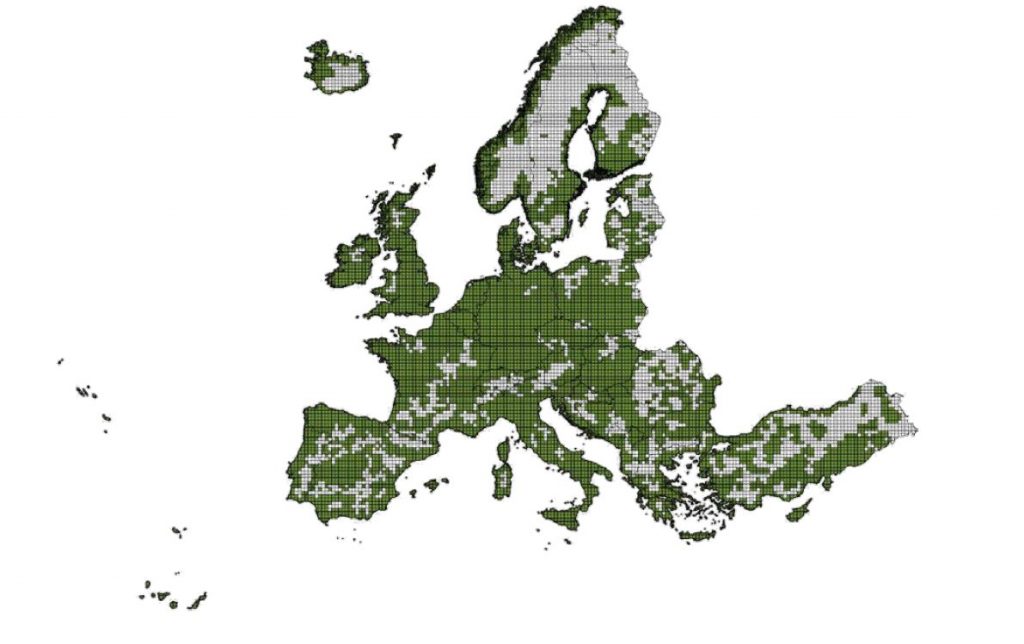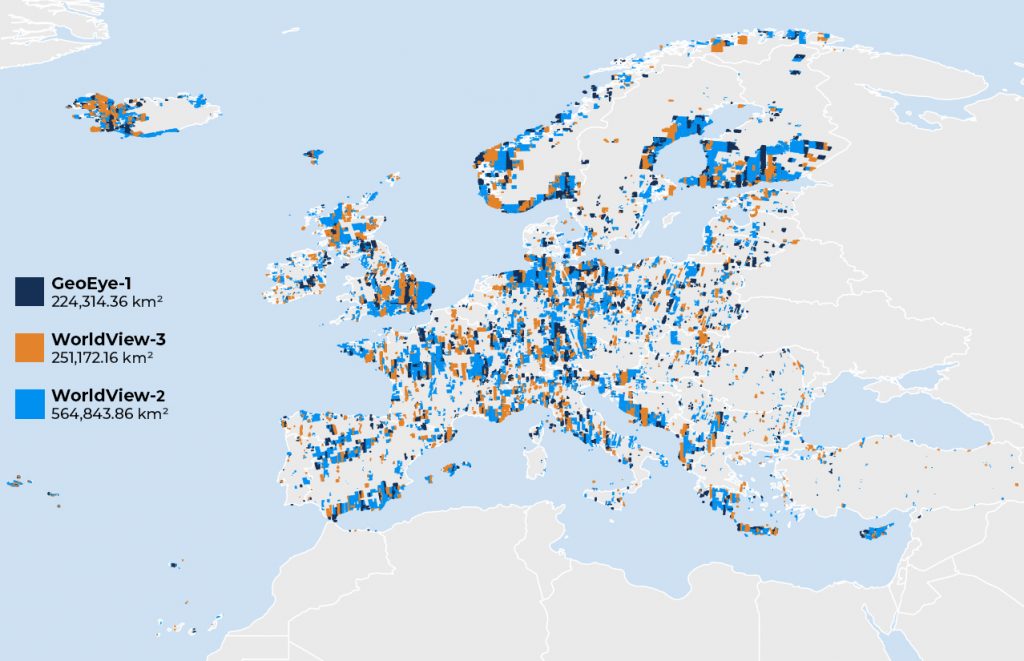Supporting European Land Management Policies via Copernicus VHR2021
Skye Boag, Marketing Manager
EUSI have delivered over one million sq km of cloud free satellite data to the Copernicus VHR2021 campaign in cooperation with Airbus and GAF AG. The VHR coverage provides a complete geospatial overview of Europe’s land and environment conditions every three years, arming European institutions and governments with data insights that bolster strategic environmental and land management policies. Collection began in May 2020 and was completed in September 2022, observing the demanding coverage requirements.
What is the Very High Resolution 2021 (VHR2021) Campaign?
Copernicus is the European Union’s Earth observation programme managed by the European Space Agency (ESA). The objective of the VHR2021 coverage is to provide the Copernicus Service Providers and other users authorised by the European Commission with a complete coverage of the region EEA-39 countries with EO Very High Resolution optical data. The supply of data is then embedded in PRISM and operated through the systems in use for other Copernicus datasets. The VHR2021 dataset will be used primarily by the Copernicus Land Monitoring Service for its Pan-European and Local components which provides geographical information on land cover and related variables supporting applications in a variety of domains such as spatial planning, forest management, water management, agriculture and food security.
Figure: Overview of the main components of the Copernicus Land Service. Source: https://land.copernicus.eu/
Meeting Demanding Technical Requirements
The Copernicus Programme provides, on a sustainable basis, the use of multiple source data in a reliable and timely service to environment and security. Whilst some of this data comes directly from the Sentinels, other data at higher resolutions must be obtained from the Copernicus Contributing Missions (CCM’s). EUSI has been a long-standing provider to the CCM’s and was able to utilise this experience to meet the strict technical requirements of the VHR2021 coverage. The most demanding requirement of the project was the delivery of 100% cloud free, cloudshadow and haze-free coverage. Furthermore, there was a priority AOI requirement attached to 70% of the coverage collection that had to be delivered at 2 m spatial resolution. In addition, a minimum of 70% of the total coverage of the campaign, equating to approximately 4.2 million sq km of data, had to be acquired during the core year 2021. Lastly, the data acquired by the various satellites had to conform to the homogenous coverage requirements and minimise coverage fragmentation as much as possible.
Delivering the Data
A total of six million sq kilometres of multispectral data at resolutions 2 – 4 m was to be acquired for VHR2021. Several of the priority AOI’s are infamous for high cloud cover and required a flexible acquisition strategy that was managed by the Operations Team at EUSI meticulously. Real time weather assessments were taken into account, and tasking plans were adjusted up to 15 minutes before acquisition to maximise the collection efficiency of the Maxar WorldView constellation. Of the entire coverage, EUSI collected and delivered just over one million sq km of imagery with from WorldView-2, WorldView-3 and GeoEye-1 satellites; 96% of the data was delivered in 2021, while the remaining 4% was delivered in 2022, exceeding coverage requirements.
Related Stories

GEOSeries: Extracting Insights From High Resolution SAR Imagery for Time-Sensitive Analysis
In this webinar, industry experts and advanced users of Umbra SAR data showcase how they transform SAR imagery into actionable insights in real-world mapping, monitoring and intelligence applications. See how NV5 and Umbra leverage ENVI SAR Essentials for advanced processing with time-efficient results, converting analytics into valuable intelligence.

Using Satellite Imagery to Build Water Resilience Across Europe
Water across Europe is facing severe pressure. Climate change, urbanisation, agricultural demands and other sources of pollution are threatening water security and creating critical challenges that need to be addressed. We have to act quickly, build stronger systems and create sustainable water resilience practices – so that both natural ecosystems and human communities can thrive. Here is how satellite imagery from EUSI can help.

EUSI and Albedo Partner to Deliver 10 cm Resolution Satellite Imagery to Europe
It is our pleasure to announce the partnership with Albedo, a builder of high-performance spacecraft and the first satellite designed to operate commercially in VLEO (Very Low Earth Orbit). This partnership will bring the world’s highest resolution satellite imagery to the European and North African market.

Updating the Land Parcel Identification Systems in 2025: The Benefits of Using Satellite Images
Agricultural paying agencies across Europe face increasing challenges in maintaining accurate and up-to-date Land Parcel Identification Systems (LPIS), ensuring compliance with the Common Agricultural Policy (CAP) and supporting sustainable agricultural practices.








